Seth Thomas Historical Timeline
Seth Thomas Historical Timeline
Overall, the Seth Thomas Historical Timeline is a great way to familiarize yourself with background information that may pertain to your clock. The Seth Thomas factory made countless clock movements during and prior to the second world war. Of course, the high quality standard made the company a great success. Furthermore, after the war they did not make any movements. They subsequently chose to use alternate makers. Alternate movement makers were chosen to produce the movements for their Seth Thomas clock cases.
Start of German made movements
So, the clocks were Seth Thomas however, the clock movements were now made in Germany. They were now German instead of American. For the most part, the German movements that they chose to use for Seth Thomas were made by Hermle clock company or Kieninger. Of course, Seth Thomas would match the units to the clock case and sell them under their company name.
A long History
All in all, Seth Thomas had a long history of clock making. Although there was an exchange in the name from one company to another throughout the years, they are now extinct. The timeline shown below will take you for a walk through the changes Seth Thomas went through.
Seth Thomas Historical Timeline
Seth Thomas starts in Wolcott, Ct by James Thomas.
James Thomas begins working with Eli Terry as a clockmaker apprentice near Waterbury, CT. Because Terry got an order to make 4,000 clocks.
James Thomas opens his own Seth Thomas shop in Plymouth Hollow, CT.
Seth Thomas starts using brass clock movements which were put in Ogee Clocks.
Seth Thomas Clock Company becomes a corporation.
Death of Seth Thomas, now run by his three sons, Seth Thomas, Jr., Aaron, and Edward.
The town of Plymouth Hollow changes its name to Thomaston in honor of Seth Thomas
Establishment of Seth Thomas Watch Company
Seth Thomas Clock Company becomes part of The General Time Instrument Company by the great grandson of Seth Thomas
The Thomas family no longer controls The General Time Instrument Company
Seth Thomas Clock Company becomes part of General Time. This is the start of all those electro-mechanical clocks with the wooden cases.
General Time ends and Colibri buys the assets of Seth Thomas
Colibri Group discontinues all business with clocks
As a result of these facts, this is the end of Seth Thomas Historical Timeline.
End of Seth Thomas
Given these points, the Seth Thomas Clock Company had a long run and a wild ride. Hopefully this history was an interesting account of where, or how, your clock came into existence. Of course, The company name may now be found on silly things like lighters and some quartz clock dials. However, what we offer and sell are the Seth Thomas units made in Germany. These are the units General Time and Tally Industries sold under the Seth Thomas name but put Hermle clock movements in the clock cases. These German units are high quality and last 25-30 years without much complaint.
↑ Back to top

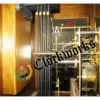
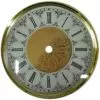
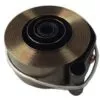
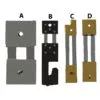
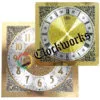











We have a Seth Thomas 102 Adamantine mantle clock recently acquired. The date on the bottom of the case is pretty much illegible, but the seller indicated the clock was manufactured before 1900. The label on the back has a date for the PATENT of September 1880. The label, though old, is still legible and has instructions for setting the clock, adjusting the speed of the mechanism, and adjusting the chime to correspond to the time display on the face of the clock. There is a number stamped on the lower left side of the mechanism that appears to be “3 5/8”.
We seem to have all the parts of the clock, including the key, a pendulum weight, and a hooked wire with a very thin flexible copper blade affixed to the end opposite the hook. But the previous owner removed the pendulum weight during a move and cannot recall how it should be reinstalled to restore the clock to operation. Would it be possible to purchase a manual or a diagram of the mechanism so we can restore the clock to operation?
Any help you can give would be appreciated.
Please email some pics to clockworks@clockworks.com and Ill see if its complete. Do not have a blow up schematic. Please include the question in the email
James Stoudenmire
30yr Clockmaker
Author of Clockworks.com